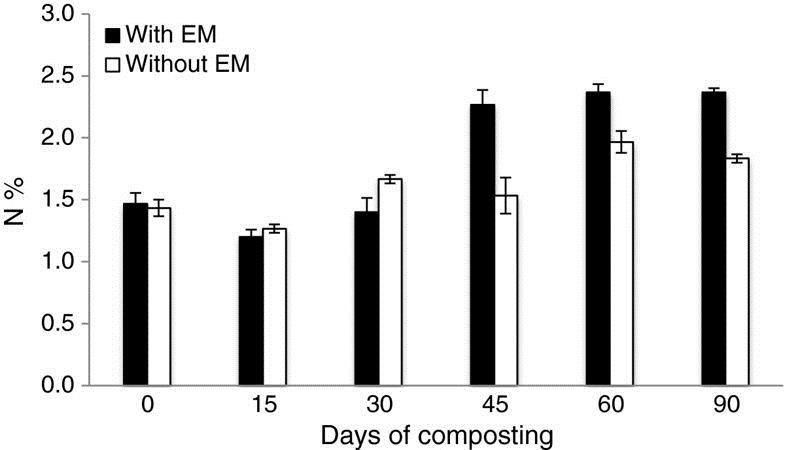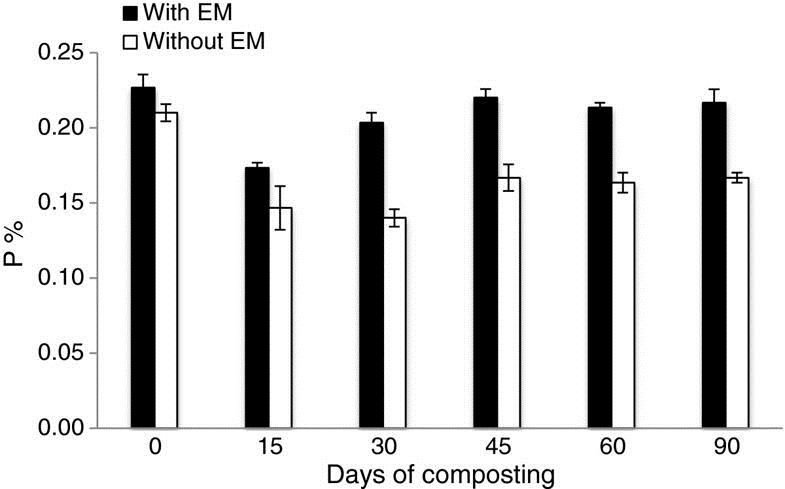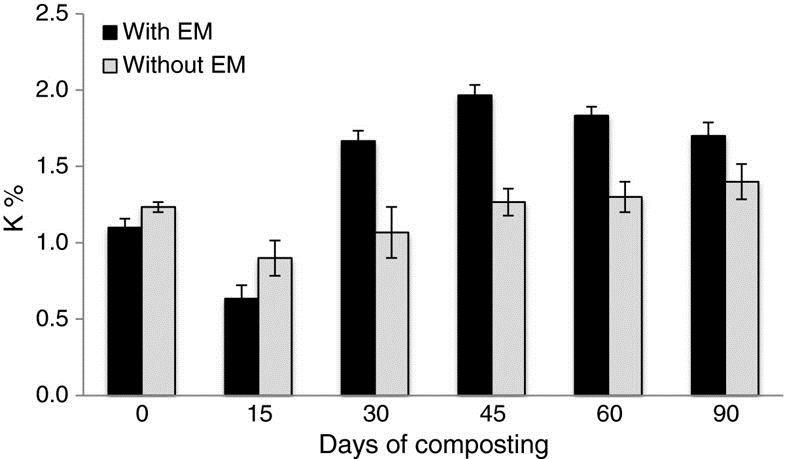When composting organic materials we are looking to re-purpose large amounts of waste by-products and also have an end product that is going to enhance soils. Composting is the decomposition of organic solid wastes. The composting process involves decomposition of organic material into a humus-like material, which provides food for our soils and nutrients for plants.
Traditional composting requires four ingredients to work:
- Carbon — for energy; the microbial oxidation of carbon produces the heat, if included at suggested levels. High carbon materials tend to be brown and dry.
- Nitrogen — to grow and reproduce more organisms to oxidize the carbon. High nitrogen materials tend to be green (or colorful, such as fruits and vegetables) and wet.
- Oxygen — for oxidizing the carbon, the decomposition process.
- Water — in the right amounts to maintain activity without causing anaerobic conditions.
EM can also be used in compost to enhance the process and the decomposition of the organic materials. In traditional compost EM will effectively enhance your aerobic compost system. It will give you a more complete breakdown of organic matter in your compost and also give you a higher quality. This means you will get a higher growth index and therefore better growth rate from plants as a result. What I want to highlight is a study which aims to assess the effect of EM application on the composting process of rice straw with goat manure and green waste and to evaluate the quality of both compost treatments. There are two treatment piles in this study, in which one pile was applied with EM and another pile without EM. Each treatment was replicated three times with 90 days of composting duration.
Results
The results showed that the application of EM in compost increases the macro and micronutrient content. The following parameters support this conclusion: compost applied with EM has more N, P and K content (P < 0.05) compared to compost without EM. Although the Fe in compost with EM is much higher (P < 0.05) than in the compost without EM, for Zn and Cu, there is no significant difference between treatments. This study suggests that the application of EM is suitable to increase the mineralisation in the composting process.
Changes in N content in composting mixtures with days.

Changes in P content in composting mixtures with days.

Changes in K content in composting mixtures with days.

Follow this link to the full trial: https://link.springer.com/article/10.1186/1735-2746-10-17
EM can also be used to produce a anaerobic compost. The EM anaerobic composting process is a fermentation gateway to very effective compost. The benefits over an aerobic composting system are that it doesn’t generate heat so therefore retains all of the energy usually lost. This makes it very effective and more digestible to the soil. More on Anaerobic composting here.
Source link














